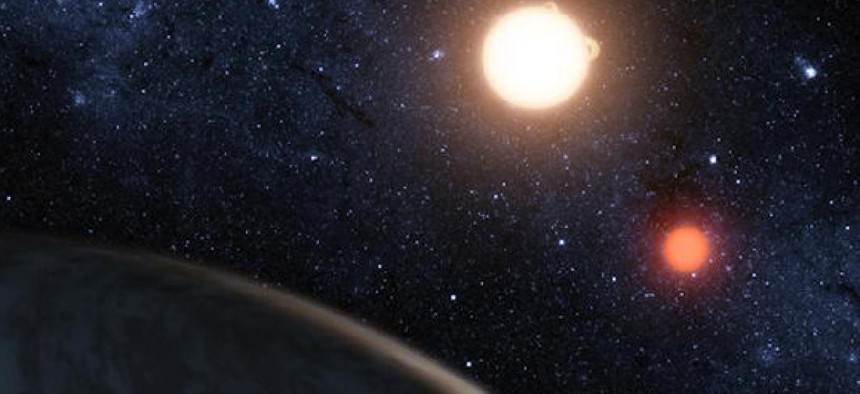The First Direct Image of a Two-Sun System

An artist's rendering of Kepler-16b NASA
Twenty years ago, humans had never identified a single planet outside our own solar system. Now we have pictures.
Last fall, to much geeky fanfare, NASA announced the discovery of Kepler-16b or, as everybody liked to call it, Tatooine, because, like the Star Wars world, Kepler-16b orbits two suns.
Scientists found the planet not by seeing it but by seeing its shadow: NASA's Kepler mission detects tiny variations in the light of distant stars. If dips in brightness occur with regularity, they deduce that a planet is transiting across the hemisphere of the star that faces us.
So although NASA could say with certainty that Tatooine was there, the only show NASA could provide for its show-and-tell were artists' renderings.
Now a team of scientists based all around the world has discovered another Tatooine-like planet (or possibly a failed star known as a brown dwarf, since its size is so, so massive), this one by the technical name of 2MASS0103(AB)b, and this time they have an actual picture, taken in infrared light, courtesy of the European Southern Observatory in Chile.
NEXT STORY: Bitcoin Is Now a Billion Dollar Industry





